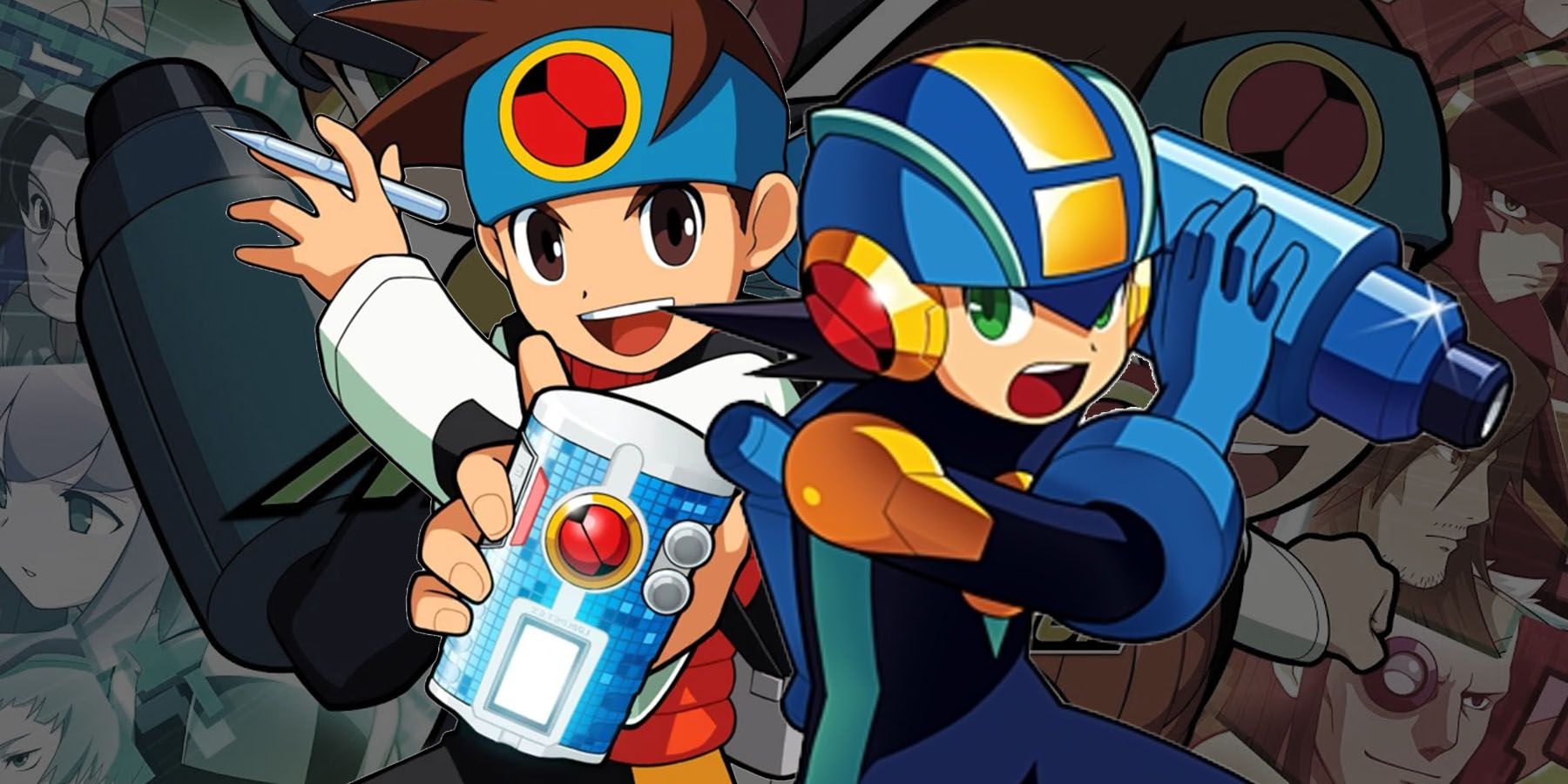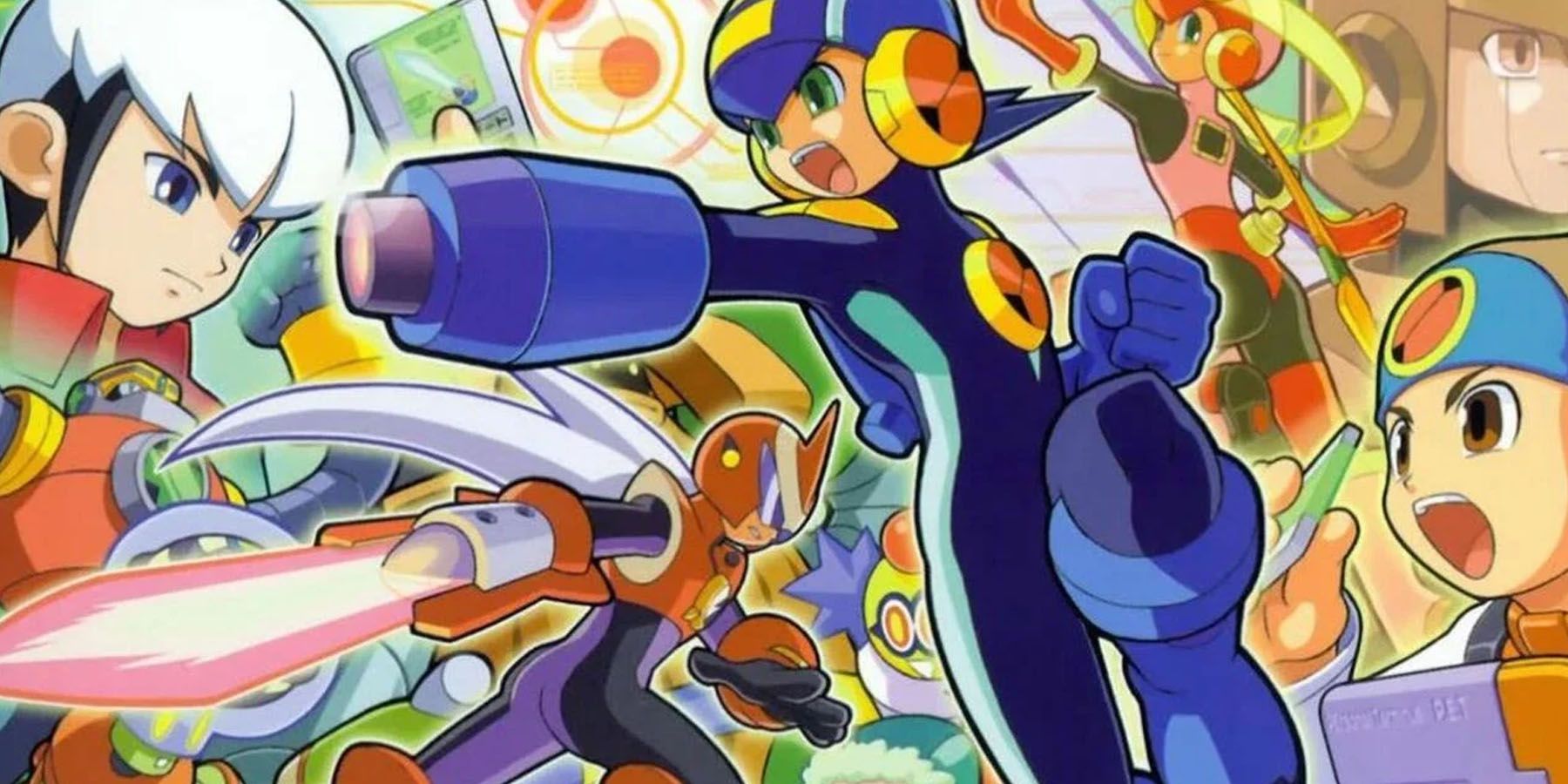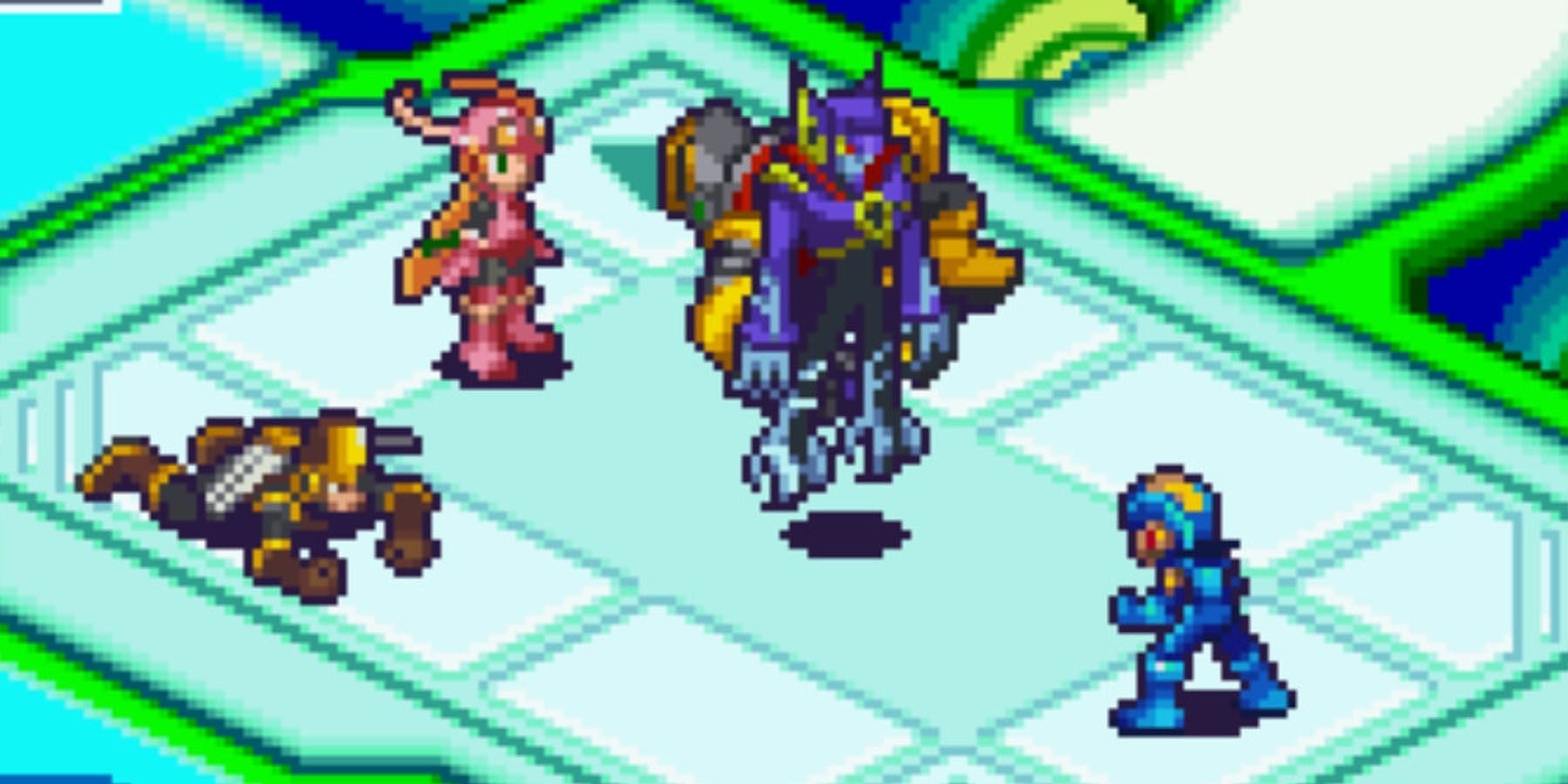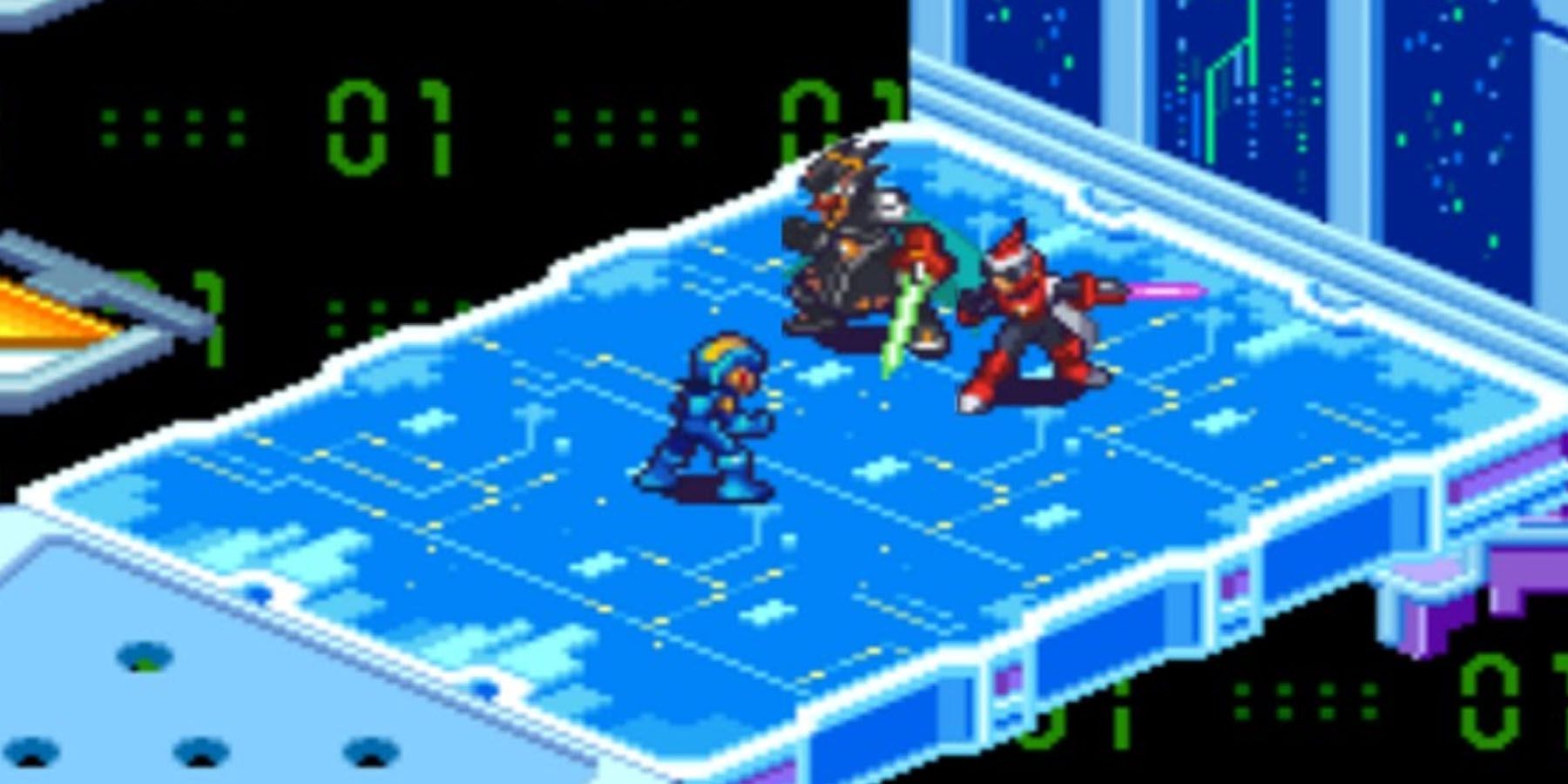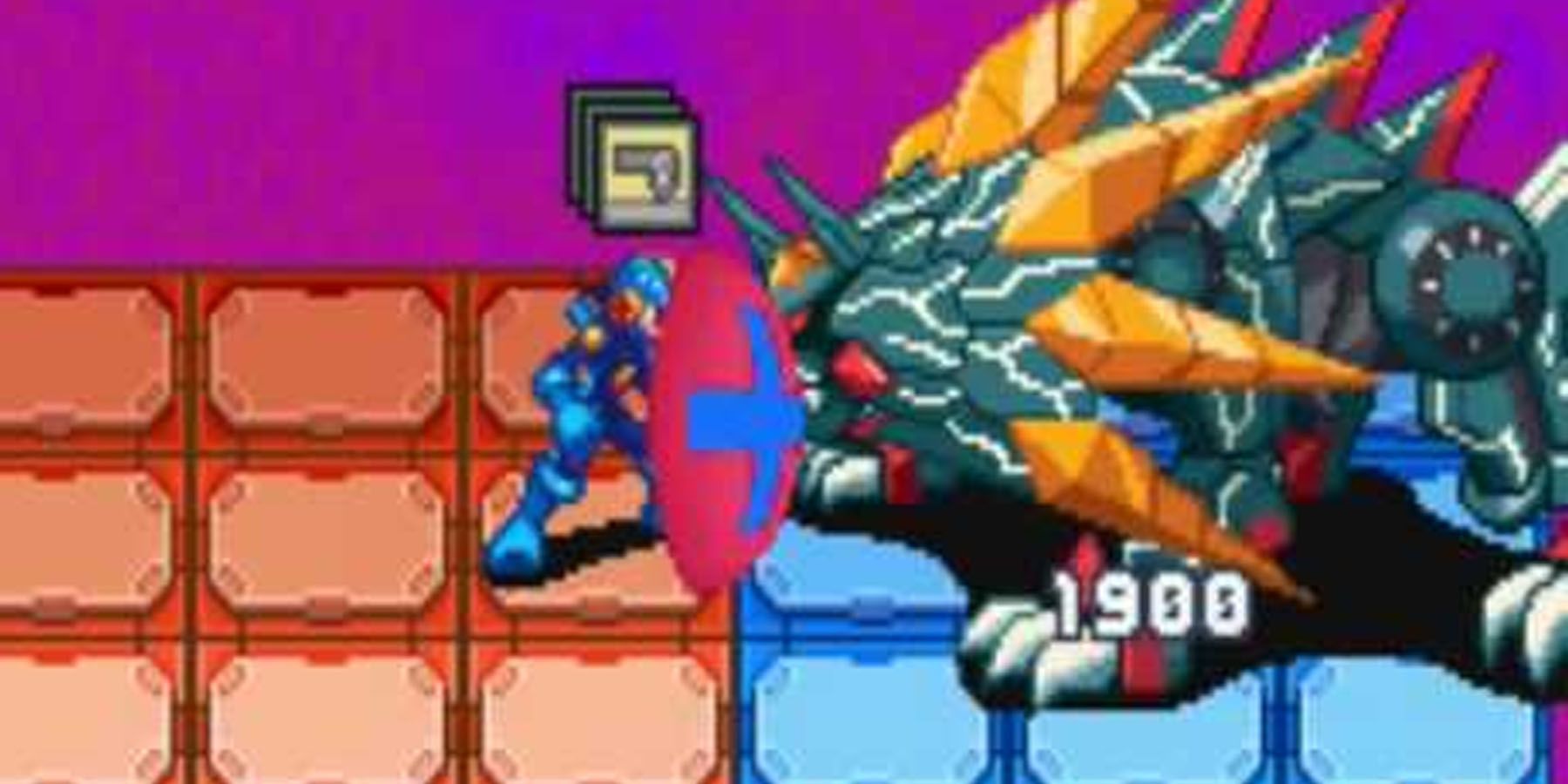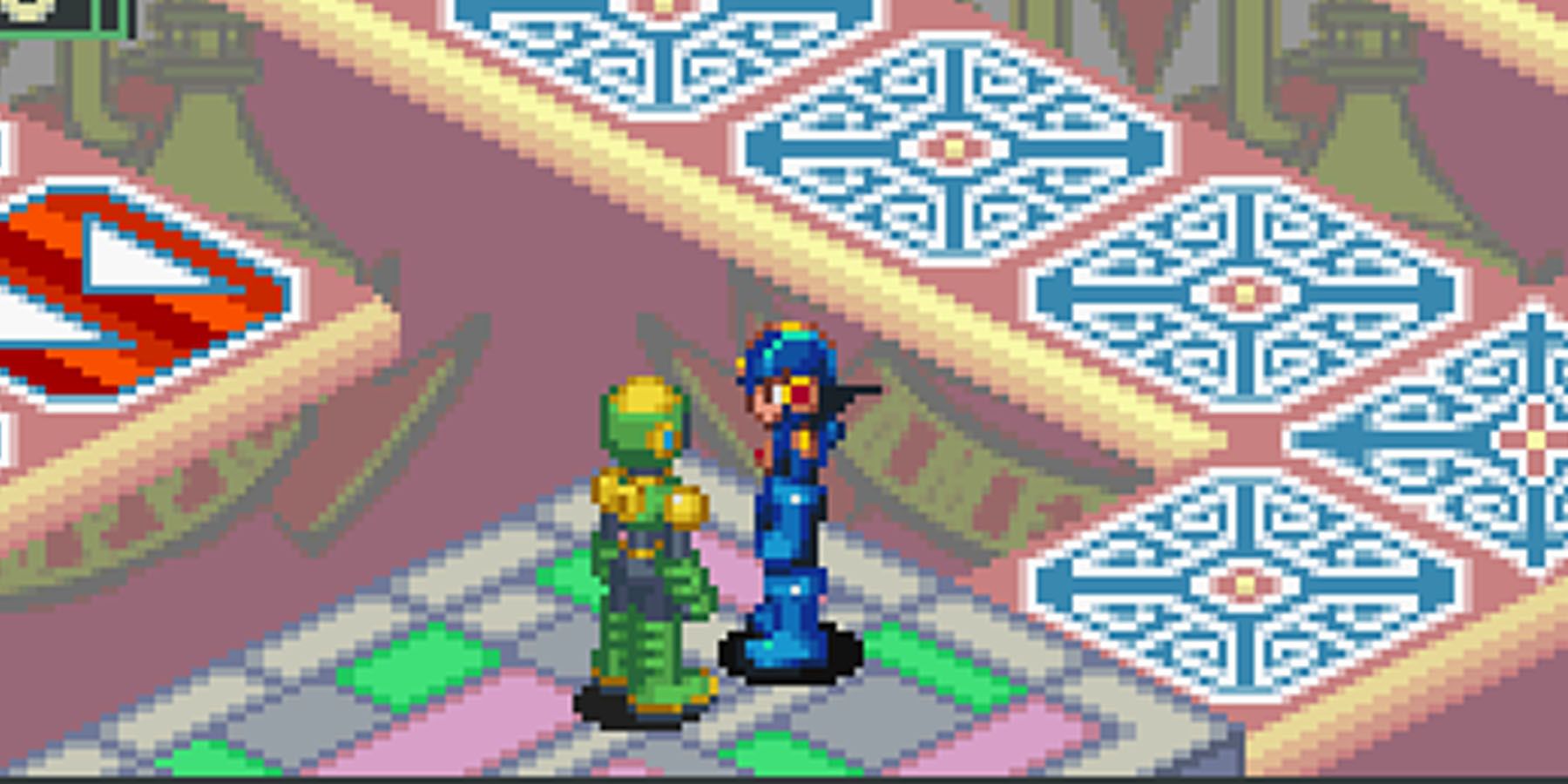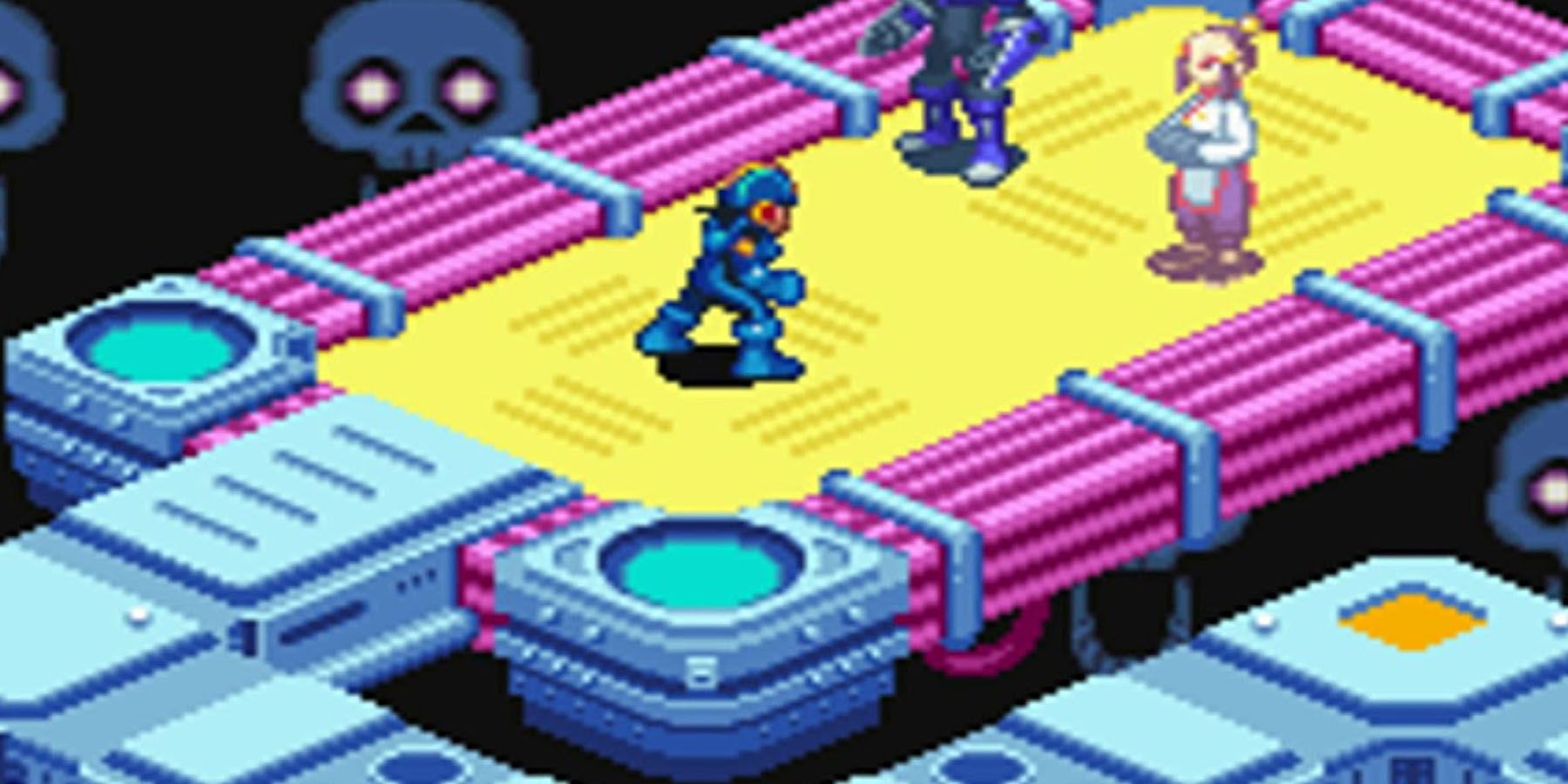Highlights
- Mega Man Battle Network series takes a different approach, focusing on cyberspace adventures instead of traditional Robot Master battles.
- The first game in the series introduces turn-based RPG mechanics and a unique card-based combat system.
- Each game in the Battle Network franchise offers different gameplay features, such as Soul Unison and Liberation Missions, providing a diverse player experience.
While most Mega Man games would have the Blue Bomber Mega Man use his Mega Buster to defeat the various Robot Masters of Doctor Wily, the Mega Man Battle Network series would have Mega Man take his adventures in cyberspace. In this series, Mega Man and his user Lan Hikari would have to save their town and even the world at large from various threats and unravel the true nature behind Mega Man’s existence.
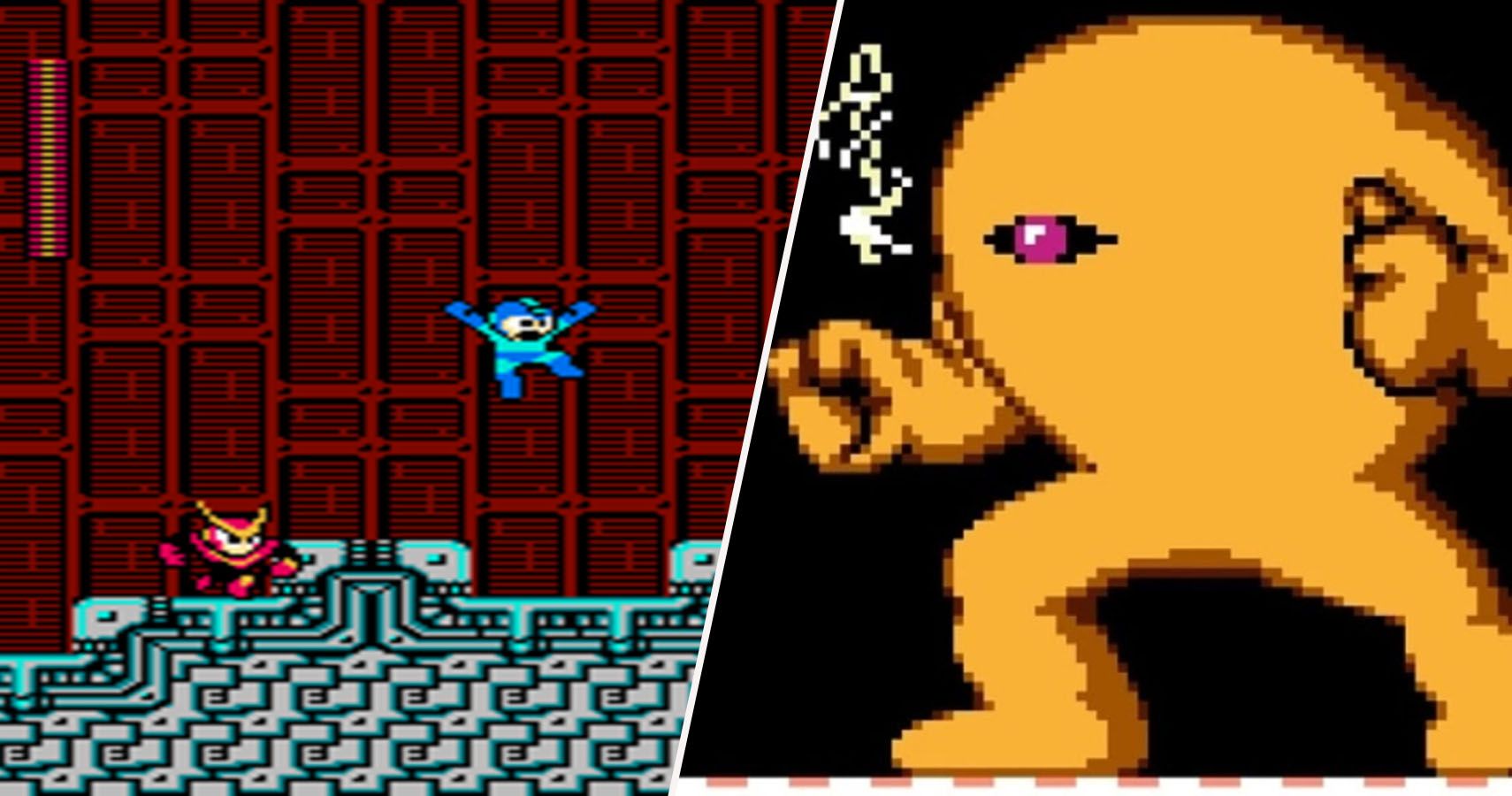
The 10 Hardest Boss Fights In Mega Man History, Ranked
Mega Man history is filled with some extremely challenging boss fights, but it's exactly that difficulty which makes them so memorable.While the Battle Network games made waves in the Game Boy Advance, the Mega Man Battle Network Legacy Collection finally brings the series to modern devices. However, just which Battle Network games are must-plays for players?
Updated on November 24, 2023 by Rhenn Taguiam: With Mega Man X DiVE Offline released as original X DiVE ended their online services, fans of the Blue Bomber may be eager to blast their way past renegade Reploids and iconic Mega Man X bosses to save cyberspace. However, fans who want a more theme-accurate virtual world experience may enjoy the shooter-RPG hybrid offerings of the Mega Man Battle Network franchise. This time starring MegaMan.EXE, the series follows the adventures of Lan Ikari as he and the aforementioned NetNavi attempt to save the world from various evil programs and nefarious organizations. While each Battle Network game introduces NetNavi iterations of popular characters, games in the franchise remain iconic for players due to special features that further diversify the player experience.
6 Battle Network
Metascore: 79
Mega Man Battle Network
- Platform(s)
- Game Boy Advance , Wii U
- Released
- March 21, 2001
- Developer(s)
- Capcom
- Genre(s)
- Action RPG , Adventure
Similar to other games, the first isn’t necessarily always an iconic entry in the franchise. Much is the same with the Battle Network franchise, courtesy of the first Mega Man Battle Network game. Set in the near future where advances in artificial intelligence allowed the creation of NetNavis that act as sentient programs, Lan Hikari and his Navi MegaMan.EXE need to stop terrorist organization World Three (WWW) from ruling the world.
While it introduces a Mega Man title with turn-based RPG mechanics, the gameplay of the first game is rather sloppy in comparison to its sequels. For instance, players can only escape combat with a special Battle Chip, and its virtual world isn’t as visually captivating as future entries. Regardless, it’s a decent game for newcomers and worth checking out, if only for understanding the improvements the sequels had to create.
Battle Network: Card Game Fused With Real Time Play, Tactical RPG Elements
Initially conceived as a card game with a tug-of-war gauge, the first Battle Network game scratched out this idea in favor of gameplay with MegaMan card-based busting with terrain domination elements. This game style essentially combines card collection applied in real-time combat, with a dose of tactical RPG-level planning. While still barebones compared to other entries, Battle Network’s gameplay is a first in the franchise and unique in the genre at large, especially when the game’s closest competitor is Kingdom Hearts: Chain of Memories, another card collection game but with heavy emphasis on action.
5 Battle Network 4: Red Sun, Blue Moon
Metascore: 68 (Red Sun), 67 (Blue Moon)
Mega Man Battle Network 4
- Platform(s)
- Game Boy Advance
- Released
- June 27, 2004
- Developer(s)
- Capcom Production Studio 2
- Genre(s)
- Tactical , RPG
Widely considered as the dividing “black sheep” of the series, the reception of the entire fanbase with regards to Mega Man Battle Network 4: Red Sun, Blue Moon is split due to its various elements on top of a switch to the game’s visuals. This time around, an asteroid is on a collision course toward Earth, and a tournament is held to decide which Operator-Navi pair should try entering cyberspace to change its course. In the midst of it all is Nebula, an evil organization trying to wreak havoc.
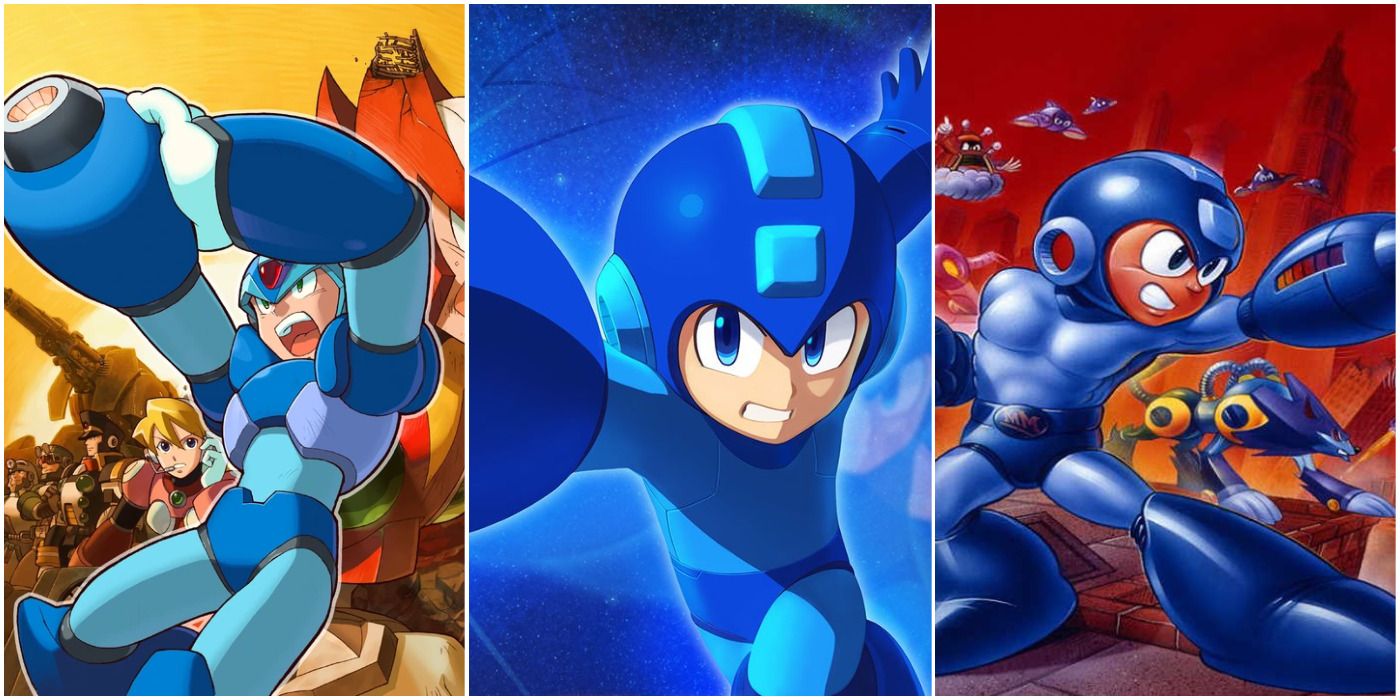
10 Things You Never Knew About Mega Man Localization
There are a lot of strange quirks concerning Mega Man's localization. Here's a look at some things you may not know.In this Battle Network entry, MegaMan now has an Emotion Meter that offers various advantages and disadvantages to the game, particularly a risk/reward Dark Chip system that offers perks at the cost of debuffs. Likewise, the game now replaces its Style Change system with Soul Unison, a similar element-change mechanic that only lasts for three turns. On top of this is a replayability option, where players need a total of three playthroughs to acquire all existing Style Changes in the game. With a rather bland story and minimized gameplay, Red Sun and Blue Moon are a tough sell for newcomers to the franchise.
Battle Network 4: Emotion Window, Double Souls Add More Flair
The game’s inherent focus on combat instead of story explains a more intense take on renewed combat mechanics. The Emotion Window becomes a new element in the game’s core gameplay, where combat-affecting emotions can range from double-damaging Full Synchro to risk-heavy Dark Soul. MegaMan accessing a darker personality is a thematic element in the game, with Dark Chips introducing powerful effects in exchange for debuffs that may debilitate MegaMan’s performance when used carelessly. Battle Network 4 also foregoes Style Changes in favor of Double Souls, limited-time transformations that cost Chips in exchange of special abilities and unique appearances based on MegaMan’s Navi friends. Active limitations on Double Souls and the battle-affecting Emotion Window add much-needed spontaniety to gameplay.
4 Battle Network 5: Team ProtoMan, Team Colonel
Metascore: 66 (Team Colonel), 67 (Team Protoman)
Mega Man Battle Network 5
- Platform(s)
- Game Boy Advance , Nintendo DS
- Released
- June 21, 2005
- Developer(s)
- Capcom Production Studio 2
- Genre(s)
- Tactical , RPG
There are always going to be games in a series that try to spice up the gameplay formula, and the Battle Network game to do so would probably be Mega Man Battle Network 5: Team ProtoMan and Team Colonel. Taking on a more tactical spin, Lan and MegaMan need to team up with either ProtoMan or Colonel in order to save Lan’s father, who was kidnapped by the Nebula, the Dark Chip Syndicate.
Completely new to both Battle Network 5 versions are Liberation Missions, where players can control other Navis they’ve teamed up with and experience battling with them to earn various rewards and free a net sector from evil programs. Dark Chips now get a dedicated library and only a few of them can be inserted into a folder, allowing players to access powerful Chaos Unisons. Likewise, Double Souls are only unlockable after Liberation Missions with certain Navis, and the Navi Customizer now has parts that can extend the duration of these chips.
Battle Network 5: Liberation Mission, New Navis Encourage Intensive Plays
Playing through stages multiple times become an emphasis in Battle Network 5, with its mechanics also encouraging more intensive plays with access to different tools. Dark Chips have become a staple in a player’s arsenal, complete with an exclusive library and having three per Folder. These Dark Chips could be used as is or sacrificed for Chaos Unisons, or powerful charged attacks that need to be timed correctly lest players summon Dark MegaMan as a mini-boss for their match. Double Souls are only unlocked when players finish specially-conditioned Liberation Missions related to certain NetNavis, with NaviCust pieces now eligible to extend their duration. The game’s focus on fast-paced, risk-heavy playstyles encouraged gamers to experiment with Battle Network 5 to achieve more satisfying combat
3 Battle Network 6: Cybeast Gregar, Cybeast Falzar
Metascore: 63 (Cybeast Falzar), 62 (Cybeast Gregar)
Mega Man Battle Network 6
- Platform(s)
- Game Boy Advance
- Released
- June 13, 2006
- Developer(s)
- Capcom Production Studio 2
- Genre(s)
- RPG , Tactical
Serving as the final entry to the Battle Network series, Mega Man Battle Network 6: Cybeast Gregar and Cybeast Falzar goes all out for lovers of the franchise. This time around, Lan and MegaMan move to a new city to start anew, only for their lives to be rocked one last time by the return of WWW and their plan to resurrect giant digital monsters known as Cybeasts for world domination.
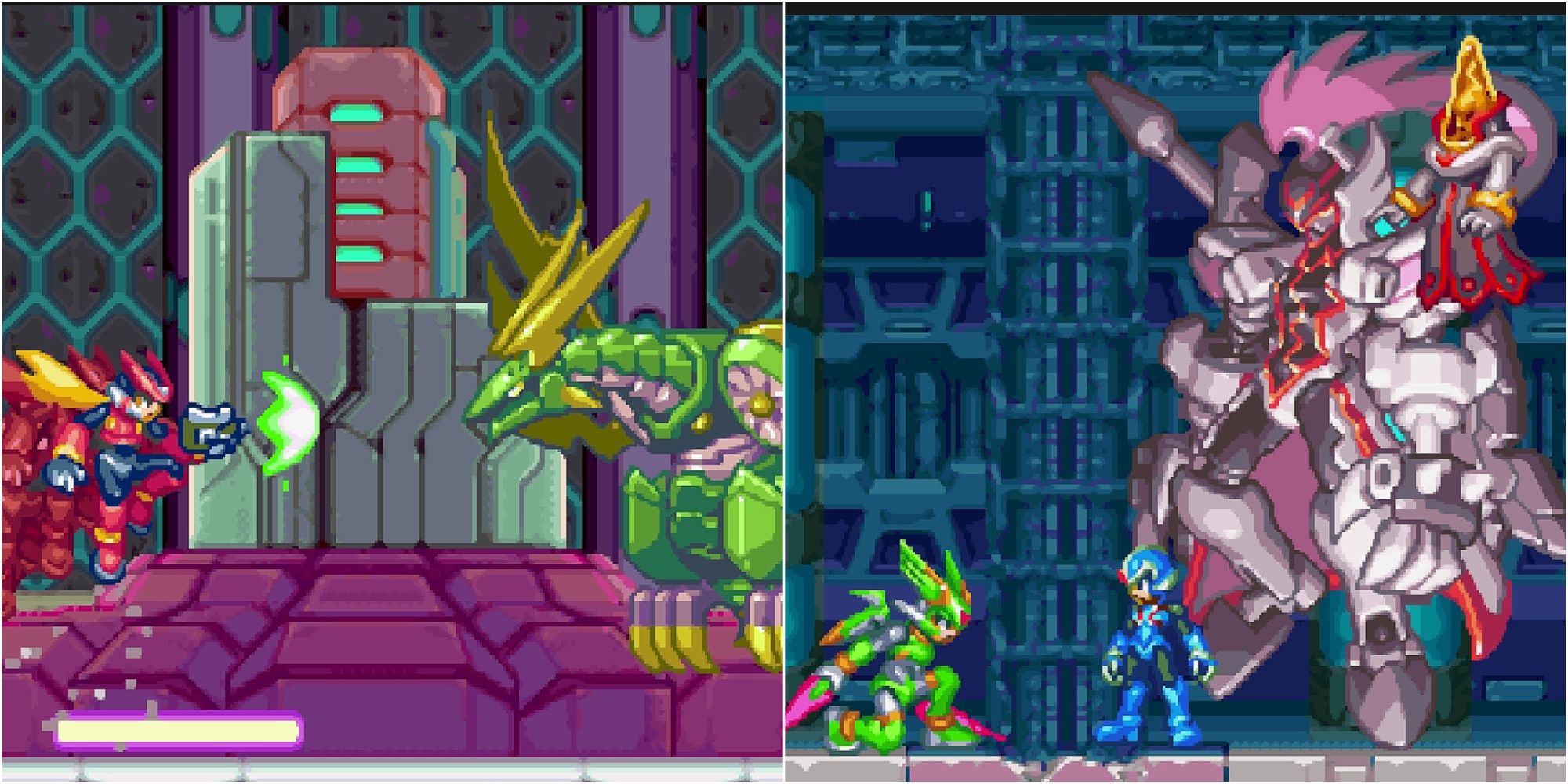
Every Mega Man Zero Game, Ranked
While each of the Mega Man Zero games are a blast to play through, some are a lot more enjoyable to go back to than others.This series culminates with some of the best features across this game in the Battle Network franchise with additional tweaks to existing features to make them more balanced. For instance, the Cross System allows MegaMan to tap into the abilities of his friends, with a new form that lasts throughout the entire battle (like in Style Change), but he gets blasted out of it for the rest of combat if hit with an elemental weakness. Likewise, there’s a Beast Out mechanic that lets MegaMan tap into a super-powerful beast form for three turns (like Double Soul).
Battle Network 6: Effects, Styles Get More Emphasis
Battle Network 6 refines overall gameplay even further by changing battlefield dynamics, switching up interactions between Elements and introducing new panel types. Folders are also enhanced with more customization options, such as Tagging to ensure Chip pairs always appear together. Two new form systems are introduced: the Cross System replaces the Double System with a form change that no longer requires a Chip sacrifice. This may last the entire match until MegaMan is hit with that form’s weakness, which then cancels the form and disables it throughout the battle. Meanwhile, absorbing the game’s titular Cybeast lets MegaMan Beast Out, transforming him into a variant of the Beast with unique abilities, including new Cross Beast forms. The additional number of style options alongside effect variations add much-needed environmental interactions to the games.
2 Battle Network 2
Metascore: 81
Mega Man Battle Network 2
- Platform(s)
- Game Boy Advance
- Released
- June 17, 2002
- Developer(s)
- Capcom Production Studio 2
- Genre(s)
- RPG , Tactical
All it needs is a properly-made sequel in order to improve leaps and bounds from a starting entry, and this is exactly what Mega Man Battle Network 2 did for the series. Set the following summer after defeating World Three (WWW), Lan and MegaMan’s life of peace is once again interrupted by a terrorist group called Gospel. Set to create the ultimate NetNavi, MegaMan needs to tap into the new Style Change system to gain an elemental advantage against foes.
Unlike other games that added a lot of features that became the framework of features of other Battle Network games, its minute changes to Mega Man Battle Network 2 made it an iconic entry in the franchise. On top of a simple story with a sympathetic antagonist, Battle Network 2 improves on the visuals of the net to make it visually distinct and easier to navigate. Not only that, Net Squares make an entry as a neutral shopping space, and players can extensively customize MegaMan’s chip folders further.
Battle Network 2: Refined Mechanics And Themes, A Return To Form
The second entry within the Battle Network series refined much of the foundation the first game introduced. Key changes to the game could be seen in its aesthetics, with Battle Network 2 overhauling the Net’s visuals to become more vibrant while Net Squares became safe havens for MegaMan. On top of limiting chip counts and Custom Screens to encourage more tactical depth, the game takes a page off the original franchise by introducing Style Changes. Thanks to Styles, MegaMan can acquire new forms and buster mechanics with the help of Elements, inspired by Robot Master abilities in the original Mega Man titles. Compared to more complex mechanics of subsequent titles, Battle Network 2 is where the series’ customization depth is both at its simplest and most accessible.
1 Battle Network 3: Blue, White
Metascore: 77 (White), TBD (Blue)
Mega Man Battle Network 3
- Platform(s)
- Game Boy Advance
- Released
- June 24, 2003
- Developer(s)
- Capcom Production Studio 2
- Genre(s)
- RPG , Tactical
Sometimes, simple remains the best, and the lack of complications in a game like Mega Man Battle Network 3: Blue, White allows it to become a standout in the franchise. Taking place months after defeating the Netmafia Gospel, Lan Hikari and MegaMan join the N1 Grand Prix to prove their worth as Netbattlers when a mysterious organization started to wreak havoc once more.
Despite this rather straightforward plot, this Battle Network entry offers players quite a lot of things to play with that add a lot of flexibility to their experience, especially with its impact on future entries like Battle Network 5. Aside from the Style Change system, the Navi Customizer allows players to “install” programs to MegaMan in a grid-based mini-game, forcing players to think outside the box to maximize upgrades to the Blue Bomber. At its core, Battle Network 3: Blue, White has enough upgrades to distinguish itself as a mainline entry, and at the same time keeps enough classic features to make it fit in with the rest of the series.
Battle Network 3: Different Versions, Same Upgraded Gameplay
Taking a page off the Pokemon playbook, Battle Network 3’s two versions encourage separate playthroughs that boast not just unique visuals and enemies but also exclusive Battle Chips and Style Changes. A notable change in Battle Network 3 are more organized Chip Folders, this time limiting the use of powerful (and frequently abused) Mega Chips and the new extremely powerful Giga Chips. The game also introduces the Navi Customizer, where “pieces” can be inserted in the NaviCust program to upgrade specific aspects of MegaMan’s performance. Styles also get an upgrade with exclusive NaviCust pieces that improve their capabilities, although MegaMan can only use one Style at a time. Despite the multiple customization systems being rough around the edges, their first iteration secured a lot of opportunities for fun gameplay before their refinement in the sequel.
The upcoming Mega Man Battle Network Legacy Collection arrives on the PC, Switch, and PS4 in 2023.

